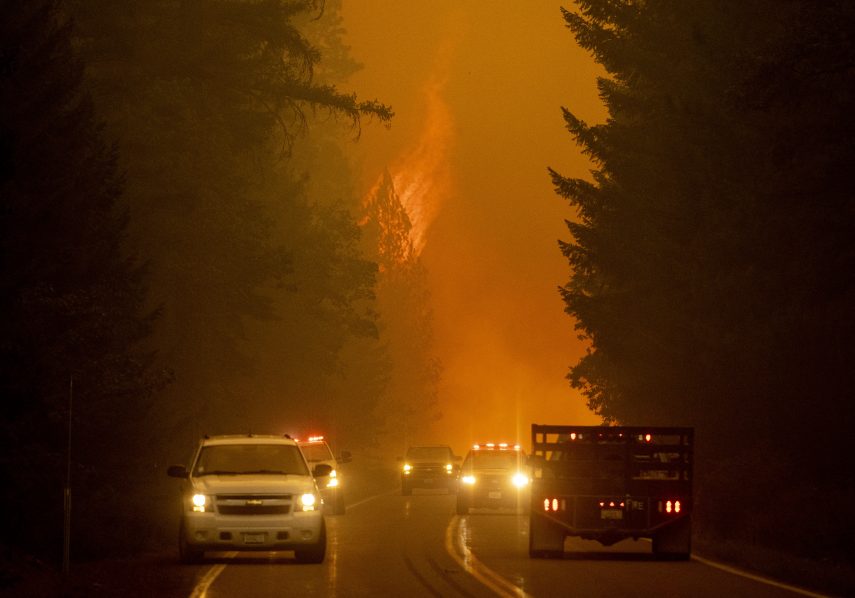The Dixie Wildfire in California has become the Second worst to hit the state in its longest history, authorities said on Sunday.
Three people have been reported missing from the affected area, and thousands of people have shifted to a safer place away from the blazing flames.
As of Sunday, the destruction by the fire had affected an area of around 489,287 acres (198,007 hectares), which was more than the previous day’s tally, 447,723 acres. It now covers a size larger than Los Angeles, reported AFP.

The Calfire website informed, on Sunday, after containing 21 percent of the fire, three firefighters were injured in the blaze.
The fire crew has estimated that the Dixie fire, which started on July 13, would take two more weeks to extinguish.
Over the weekend, it even crossed the 2018 Mendocino Complex Fire’s record of destruction caused in California.
“The fire outlook continues to reflect warmer and drier conditions leading to the high potential for severe wildfire activity throughout the (West) through the rest of summer and into the fall, widespread high temperatures … with periods of lightning activity continue to exacerbate the wildfire situation,” the fire center warned Sunday.

The Dixie Fire has been named after a road where the fire was ignited and is still fueled by bone-dry vegetation fanned by strong winds.
It has affected around 700 square miles in Northern California’s Butte, Plumas, Tehama, and Lassen counties reported USA Today.
“We knew we didn’t get enough rainfall, and fires could happen, but we didn’t expect a monster like this,” said Kesia Studebaker, who lives and works in the town.
On Saturday, Governor Gavin Newsom visited the sites and appreciated the firefighter’s efforts, and expressed “deep gratitude” to the 8,500 firefighting personnel who have been battling with the monstrous fire.

Many studies throughout the year have suggested Climate change in the backdrop of calamities like droughts and wildfires and have become the most significant concern.
“At the end of the day, we have to acknowledge this –the dries are getting a lot drier, it is hotter than it has ever been… we need to acknowledge just straight up these are climate-induced wildfires,” said Newsom.
Weak winds and higher humidity have given some relief to the firefighters. However, they are preparing for when temperatures rise to 100 degrees Fahrenheit (38 Celsius) in the coming days.

Heavy smoke and steep rails have made accessibility and visibility difficult in the fire for the firefighters, in spite of which they are continuing to fight and are on their mission to extinguish it as soon as possible.
The fire destroyed the historic Mount Harkness Fire Lookout in Lassen Volcanic National Park. It burned into the Juniper Lake area and was the first big loss of the park.

“There are other resources at risk, particularly facilities. Many of them are historic, so we will report that out to the public as soon as we can confirm any losses, park Superintendent Jim Richardson said Saturday night.
Also Read: DU makes tree plantation mandatory part of the curriculum from the next academic session
















